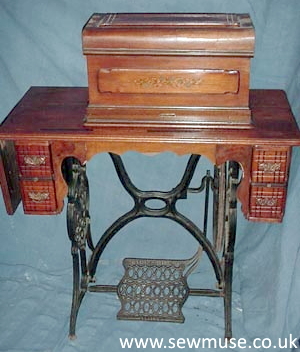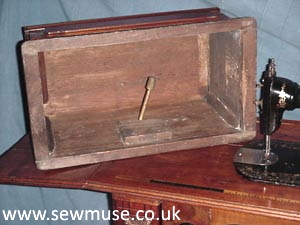Kimball & Morton Ltd This web page Copyright © 2020 David G Best All rights reserved
Kimball & Morton was established in Glasgow in 1867 by Alonzo Kimball and John Morton both of whom had worked for the Singer company. In May 1874 Alonzo Kimball left the partnership and the firm became incorporated (Limited) in early 1887 the company went into liquidation in 1907 but seems to have managed to continue in a reduced capacity until 1916.
The company specialised in industrial sewing machines for sail, sack and tarpaulin work as well as producing a range of domestic sewing machines including the famous "Lion" sewing machine as well as the more mundane Singer principle Family & Medium machines and a Hand machine. In 1889 the company was contracted to produce 12,000 for the So-All Sewing Machine Company and in 1892 produced the Eagle which was based on So-All castings.
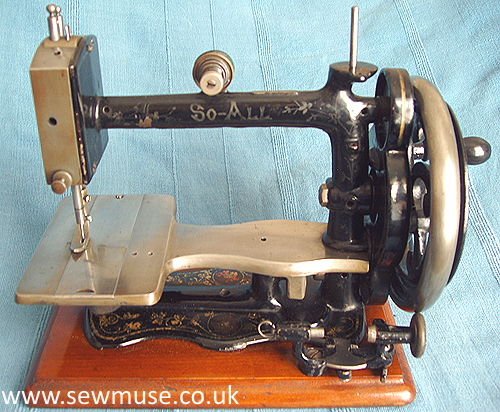
So-All Serial No. 3692.
The So-All Sewing Machine Co was founded in 1889 by Wilmot Holland, a merchant who had purchased various sewing machine patents. Initially premises were taken in Lombard Street, London but moved to 3 Oxford Street, London in October 1889.
The So-All was produced by Kimball & Morton and 12,000 machines at a cost of 14s 6d each we ordered. The So-All sold for 35s and a stand and cover cost an additional 25s however was spectacularly unsuccessful, in just over three years only 2,000 machines were sold with a large wholesale firm buying 1,000 of those at 5s each.
After one failed attempt to form a public company a second prospectus was issued in December 1892 and this also failed. Early in 1893 Wilmot Holland had a receiving order made against him.
This is an early version of the So-All made in 1889. It has a plain steel needle head and the cloth plate is polished cast iron, on later versions the cloth plate was jappaned and there are examples decorated with Mother of Pearl.
The So-All was unusual in that it used the needle to draw the material across the cloth plate rather than the more common four motion feed hence the unusually wide needle head.
Click this link to a FREE copy of the So-All Manual
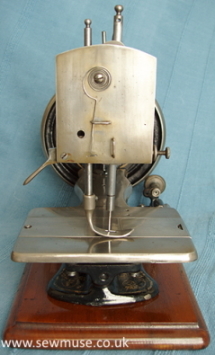
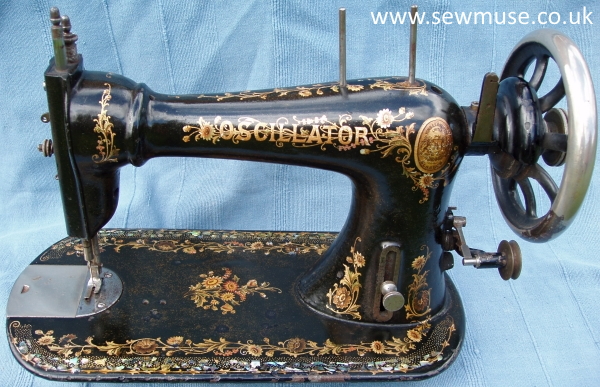
Kimball & Morton 'Oscillator':
Serial No.122790.
The Oscillator seems to have been introduced in 1886, early versions, certainly up to 1889 had a different decal pattern and the wood work was less ornate. This machine would probably date to the late 1890's, the head has a floral decal and Mother of Pearl flakes along the front and rear edges of the bed. The shuttle is quite small and is positioned vertically beneath the slide plate.
The head is in a four drawer table, with an extension flap. The stand is quite substantial, there are rampant Lions cast into the sides. The treadle stand on the Oscillator is very robust with a large wheel compared to other machines, but the foot plate is quite small.
The case was not as well made, being only thin ply and requires restoration. It has a pretty central panel. The locking mechanism is unusual, a lever action swings a 'rod' under the arm of the machine.
